Nissan Interstar VS Suzuki Swift – Specs, Efficiency & Price Comparison
Which model is the better choice – the Nissan Interstar or the Suzuki Swift? We compare performance (170 HP vs 82 HP), boot capacity ( vs 265 L), efficiency (7.40 L vs 4.40 L), and of course, the price (34900 £ vs 16200 £).
Find out now which car fits your needs better!
The Nissan Interstar (Cargo Van) is powered by a Diesel or Electric engine and comes with a Manuel or Automatic transmission. In comparison, the Suzuki Swift (Hatchback) features a Petrol MHEV engine and a Manuel or Automatic gearbox.
When it comes to boot capacity, the Nissan Interstar offers , while the Suzuki Swift provides 265 L – depending on what matters most to you. If you’re looking for more power, you’ll need to decide whether the 170 HP of the Nissan Interstar or the 82 HP of the Suzuki Swift suits your needs better.
There are also differences in efficiency: 7.40 L vs 4.40 L. In terms of price, the Nissan Interstar starts at 34900 £, while the Suzuki Swift is available from 16200 £.
Compare all the key specs now and find out which model fits your lifestyle best!
Nissan Interstar
The Nissan Interstar is a versatile van that expertly combines practicality with modern design. It offers a spacious interior that caters to both cargo and passenger needs, making it ideal for businesses and families alike. With its robust performance and efficient fuel consumption, the Interstar stands out as a reliable choice in the commercial vehicle market.
detailsSuzuki Swift
The Suzuki Swift is a compact hatchback that offers a spirited driving experience, making it a popular choice for city dwellers. With its sleek design and agile handling, it effortlessly navigates urban streets while providing a comfortable interior with ample space for passengers and luggage. Its economical fuel consumption and reliable performance make it a practical option for those seeking a balance between style and functionality.
details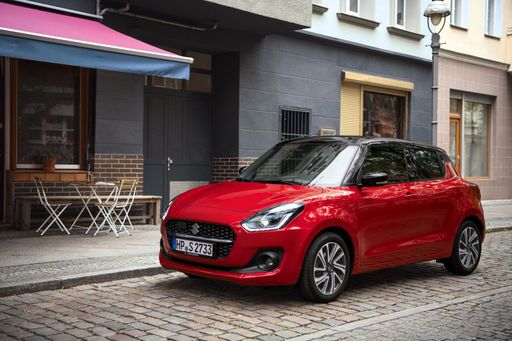 @ Suzuki
@ Suzuki
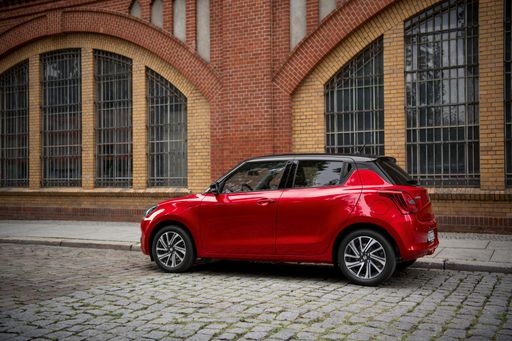 @ Suzuki
@ Suzuki
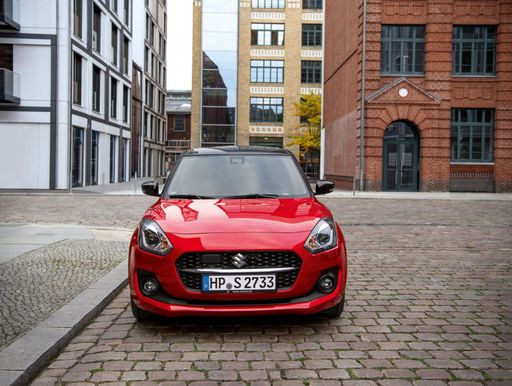 @ Suzuki
@ Suzuki
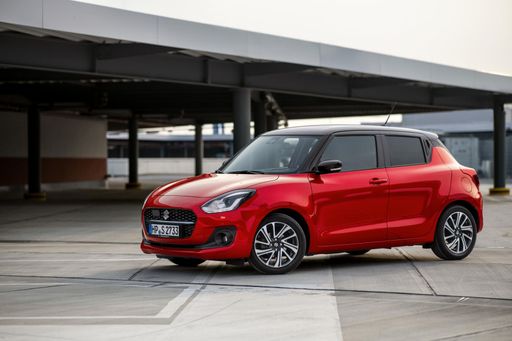 @ Suzuki
@ Suzuki
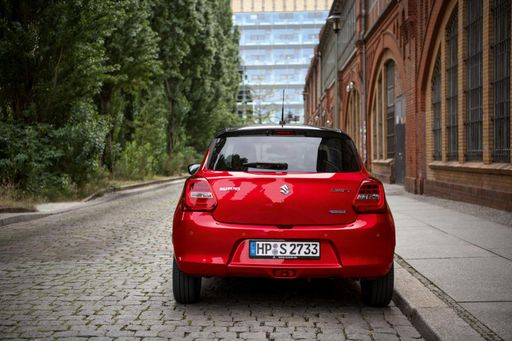 @ Suzuki
@ Suzuki
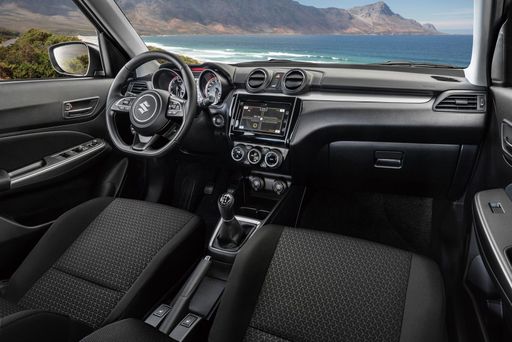 @ Suzuki
@ Suzuki

|
|
|
|
|
Costs and Consumption |
|
|---|---|
|
Price
34900 - 55600 £
|
Price
16200 - 19600 £
|
|
Consumption L/100km
7.4 - 7.5 L
|
Consumption L/100km
4.4 - 4.9 L
|
|
Consumption kWh/100km
-
|
Consumption kWh/100km
-
|
|
Electric Range
175 - 410 km
|
Electric Range
-
|
|
Battery Capacity
-
|
Battery Capacity
-
|
|
co2
0 - 195 g/km
|
co2
98 - 110 g/km
|
|
Fuel tank capacity
80 L
|
Fuel tank capacity
37 L
|
Dimensions and Body |
|
|---|---|
|
Body Type
Cargo Van
|
Body Type
Hatchback
|
|
Seats
3 - 7
|
Seats
5
|
|
Doors
4
|
Doors
5
|
|
Curb weight
2053 - 2535 kg
|
Curb weight
1069 - 1145 kg
|
|
Trunk capacity
-
|
Trunk capacity
265 L
|
|
Length
5680 - 6315 mm
|
Length
3860 mm
|
|
Width
2080 mm
|
Width
1735 mm
|
|
Height
2498 - 2756 mm
|
Height
1485 - 1510 mm
|
|
Payload
965 - 1447 kg
|
Payload
282 - 296 kg
|
Engine and Performance |
|
|---|---|
|
Engine Type
Diesel, Electric
|
Engine Type
Petrol MHEV
|
|
Transmission
Manuel, Automatic
|
Transmission
Manuel, Automatic
|
|
Transmission Detail
Schaltgetriebe, Automatikgetriebe
|
Transmission Detail
Schaltgetriebe
|
|
Drive Type
Front-Wheel Drive
|
Drive Type
Front-Wheel Drive, All-Wheel Drive
|
|
Power HP
105 - 170 HP
|
Power HP
82 HP
|
|
Acceleration 0-100km/h
-
|
Acceleration 0-100km/h
-
|
|
Max Speed
115 - 177 km/h
|
Max Speed
160 - 170 km/h
|
|
Torque
300 - 380 Nm
|
Torque
112 Nm
|
|
Number of Cylinders
4
|
Number of Cylinders
3
|
|
Power kW
77 - 125 kW
|
Power kW
61 kW
|
|
Engine capacity
1997 cm3
|
Engine capacity
1197 cm3
|
General |
|
|---|---|
|
Model Year
2024 - 2025
|
Model Year
2024
|
|
CO2 Efficiency Class
G, A
|
CO2 Efficiency Class
C
|
|
Brand
Nissan
|
Brand
Suzuki
|
Nissan Interstar
The Evolution of the Nissan Interstar
The Nissan Interstar has long been a staple in the commercial vehicle sector, known for its robust build and practical design. The latest iterations have further cemented its status with a range of technical enhancements and innovative features aimed at aiding businesses in achieving optimal efficiency. Whether you're navigating city streets or traversing the highways, the Interstar stands out as a reliable workhorse ready to meet various transport needs.
Power and Performance
The current range of Nissan Interstar models boasts diesel engines ranging from 105 to 180 PS, offering a commendable blend of power and fuel efficiency across the board. With a fuel consumption of between 7.4 and 7.5 litres per 100 kilometres, these vehicles are designed to minimise operational costs while maximizing performance.
All models feature four-cylinder engines, with engine displacement between 1997 and 2299 cm³, capable of producing torque figures between 330 and 400 Nm. These specifications ensure that the Interstar offers superior pulling power, which is particularly useful for transporting heavy loads across different terrains.
Transmission and Drive Options
Versatility is at the heart of the Nissan Interstar, with transmission options including both manual and automatic gearboxes. Drivers can also choose between front-wheel and rear-wheel drive configurations, allowing the vehicle to suit specific logistical requirements or personal preferences.
For those seeking simplicity and ease of use in urban environments, the Interstar with its automated gearshift provides a smooth driving experience, reducing driver fatigue and increasing focus on the road ahead.
Dimensions and Load Capacities
The Nissan Interstar is available in various lengths, from 5048 mm to an extensive 6848 mm, catering to diverse commercial needs. With widths ranging from 2070 mm to 2222 mm and heights from 2307 mm to 2808 mm, the Interstar offers multiple configurations to maximise cargo space and accommodate various loads.
With a maximum payload capacity of up to 1451 kg, businesses can rest assured that the Interstar is more than capable of delivering goods efficiently without compromising on safety or comfort.
Innovation and Technological Features
While functionality remains a priority, Nissan has not skimped on technological advancements. Among the innovations included are advanced safety features, such as anti-lock braking systems (ABS), electronic stability control (ESC), and a variety of sensors to assist with parking and reversing.
In terms of driver comfort, the brand offers multiple trim levels with exceptional interior features designed to enhance driver experience during long hauls. Options such as climate control, advanced navigation systems, and modern infotainment setups are available, ensuring that both driver and passenger remain comfortable and connected, regardless of the journey length.
Coachwork and Trim Options
The Interstar line-up provides a range of trim levels and equipment lines, from the entry-level Visia to the high-spec Tekna, catering to different market demands and individual preferences. The selection allows buyers to prioritise features that best suit their operation or driving style.
For example, the N-CONNECTA variant offers an array of added extras, enhancing both connectivity and comfort for drivers who rely on the vehicle as a mobile office.
Conclusion
The Nissan Interstar represents a harmonious blend of power, efficiency, and technological innovation in the large van segment. With its vast array of options and features, the Interstar is undeniably a top choice for businesses looking to invest in a dependable and adaptable commercial vehicle. As the line-up continues to evolve, the Interstar remains poised to meet the growing challenges and demands of the modern logistic landscape.
Suzuki Swift
The Suzuki Swift: A Compact Marvel of Engineering
Experience driving pleasure with the Suzuki Swift, a hallmark of efficiency and innovation in the compact car segment. This dynamic hatchback offers a distinctive blend of spirited performance, cutting-edge technology, and impressive economy, making it an ideal choice for urban adventures and beyond.
Performance and Efficiency: A Dualjet Hybrid Wonder
At the heart of the Suzuki Swift is the 1.2 Dualjet Hybrid engine, delivering a robust 82 PS (61 kW) and 112 Nm of torque. This mild-hybrid technology enhances fuel efficiency, resulting in an impressive consumption rate of 4.4 to 4.9 L/100 km. The Swift achieves a balance between lively acceleration and economical driving, promising a smooth ride through either manual or CVT transmission options.
Innovative Engineering and Design
The Suzuki Swift is built around a lightweight yet sturdy frame, with a kerb weight ranging from 1,069 to 1,145 kg. Its compact dimensions - 3,860 mm in length, 1,735 mm in width, and a height of 1,485 to 1,510 mm - make it agile in city traffic while maintaining a spacious interior. With a boot capacity of 265 litres, the Swift maximises cargo space without compromising passenger comfort.
Cutting-Edge Technology for the Modern Driver
The Swift’s modern interior is loaded with features to enhance the driving experience. It comes with an array of safety and infotainment technologies, including a high-resolution touchscreen, navigation system, and smartphone connectivity. Safety is paramount, featuring advanced systems such as lane departure warning and adaptive cruise control.
Customisation and Affordability
Suzuki offers a variety of trim levels, including Club, Comfort, and Comfort+ variants, with ALLGRIP all-wheel-drive options available for those seeking additional traction and stability. In addition, the cost efficiency of owning a Suzuki Swift is unparalleled, with monthly costs ranging from €702 to €786 and a competitive price range of €18,900 to €22,900.
Conclusion: Swift by Name, Swift by Nature
The Suzuki Swift embodies the ethos of smart mobility, offering a sophisticated and economical ride. Whether you're navigating the twists of a mountain road or commuting through a bustling city, the Swift’s blend of performance, efficiency, and innovative design makes it an outstanding choice for drivers seeking a reliable yet exciting vehicle.
The prices and data displayed are estimates based on German list prices and may vary by country. This information is not legally binding.
